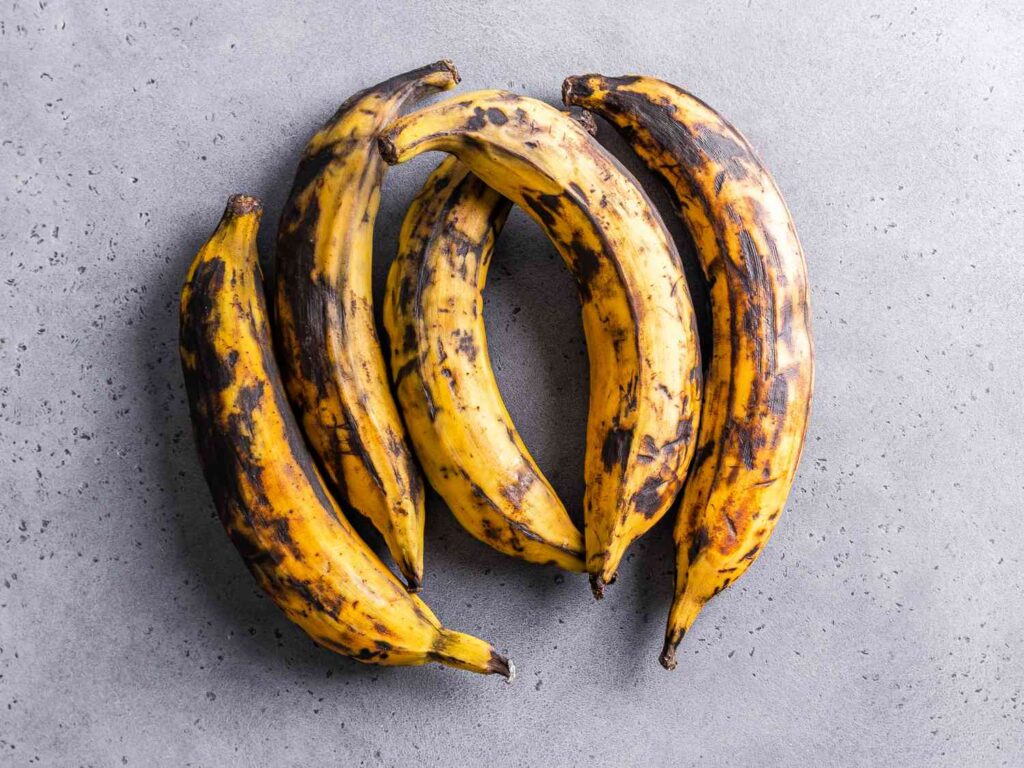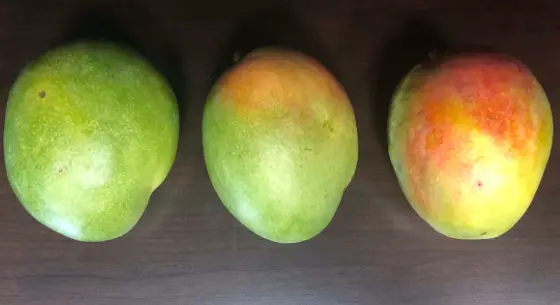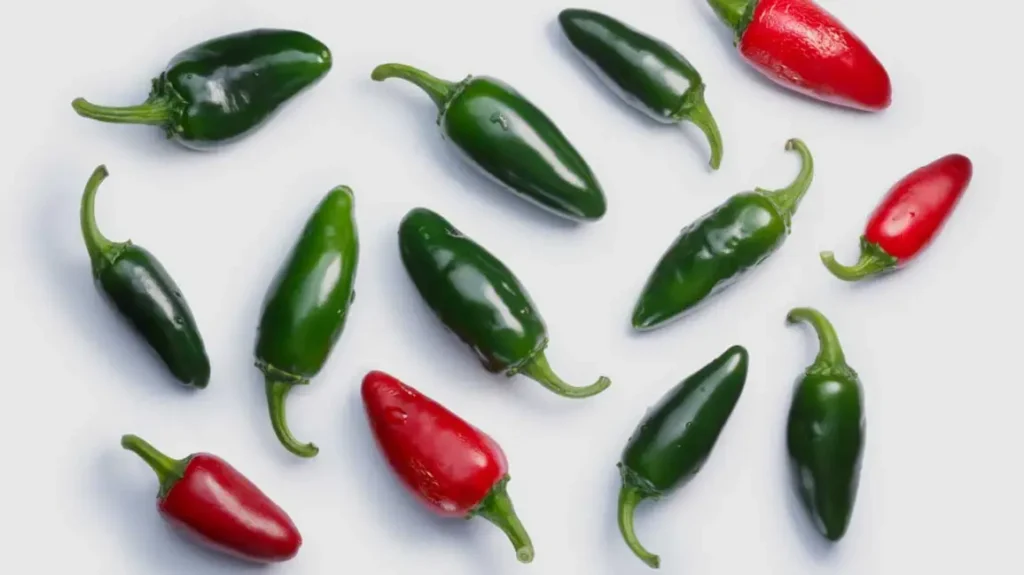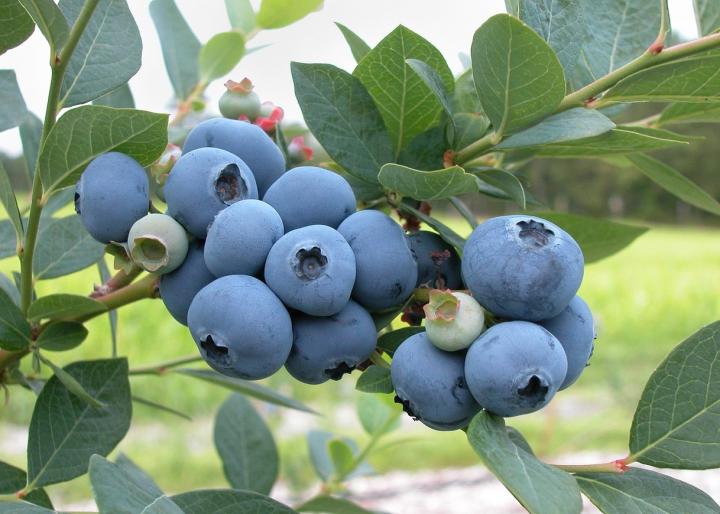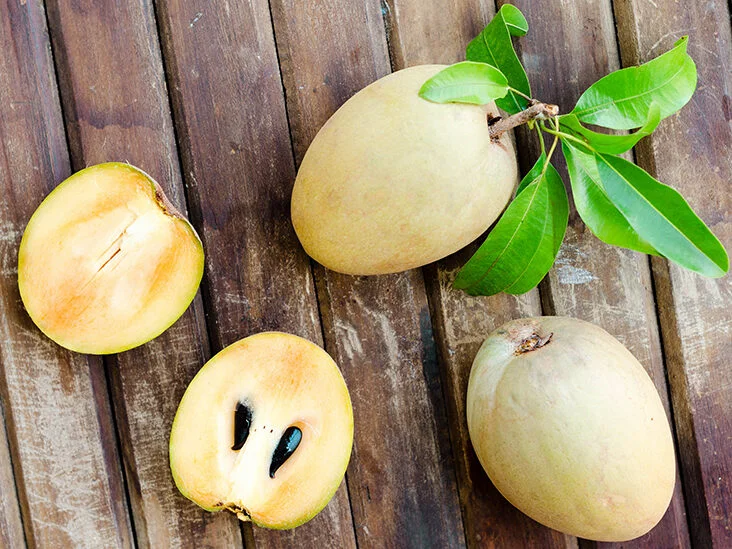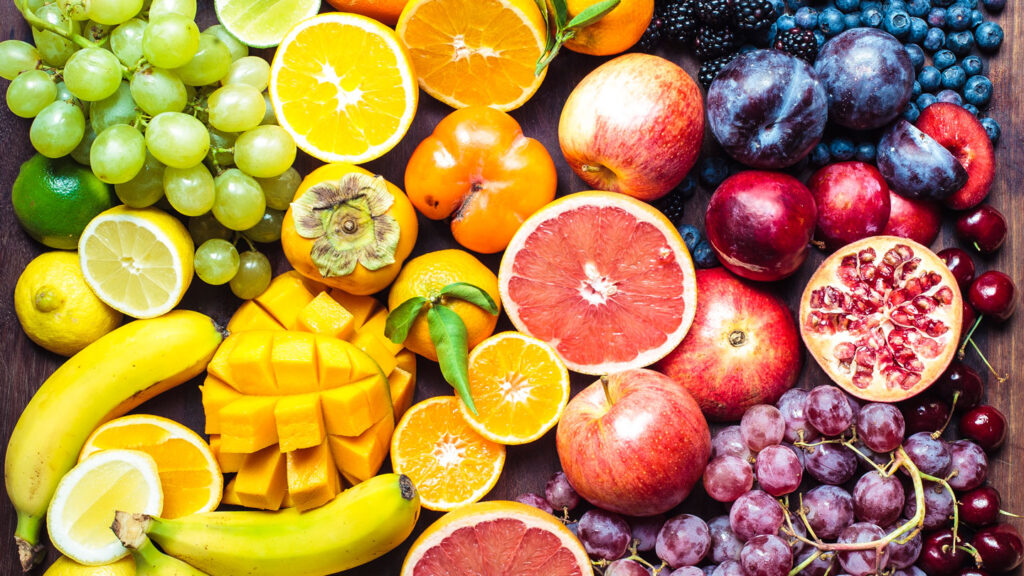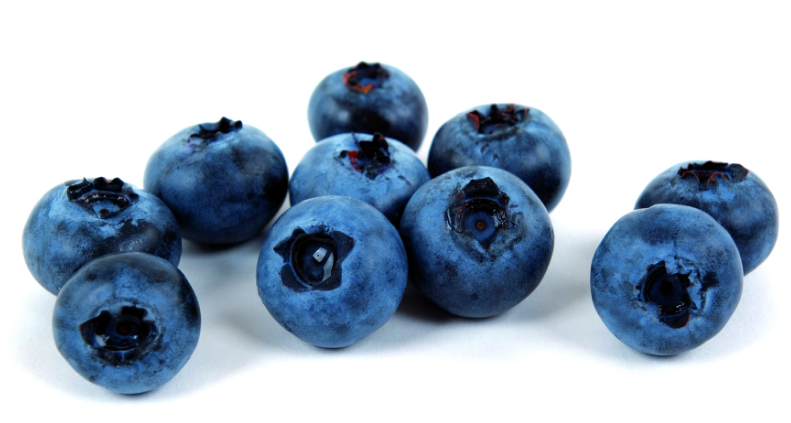Blue-colored fruits are quite uncommon, but they are treasured for their uniqueness. They brighten up your fruit bowl and are packed with antioxidants, along with other nutrients necessary for staying healthy.
Let’s explore 22 incredible blue fruits that are not only a feast for the eyes but also for your well-being:
Table of Contents
- 1. Blueberries
- 2. Blue Tomatoes
- 3. Concord Grapes
- 4. Bilberries
- 5. Sloe Plums
- 6. Blue Dragon Fruit
- 7. Blue Olive
- 8. Blue Sausage Fruit
- 9. Blue Corn
- 10. Ribier Grapes
- 11. Honeysuckle
- 12. Jenipapo
- 13. Juniper Berry
- 14. Laurestine
- 15. Saskatoon Berry
- 16. Elderberries
- 17. Kastoree Mango
- 18. Blue Java Bananas
- 19. Blue Sausage Fruit
- 20. Blue Marble Tree Fruit
- 21. Blue Jarrahdale Pumpkin
- 22. Nonna Agnes Blue Beans
- Conclusion
1. Blueberries

With their lovely blue hue, blueberries are small and come in a variety of shapes and types. Their color is due to an antioxidant called anthocyanin. They have a smooth skin and tiny seeds you can hardly see.
Blueberries are not just tasty but are also full of good things. They help your heart by lowering blood pressure and improving cholesterol levels. They also help your brain work better and can help you remember things better, which is helpful for students and people who work a lot.
You can do a lot of things with blueberries. Eat them on their own, put them in cakes and pies, or use them to make jam, sauces, or yummy smoothies. However you like to eat them, blueberries are both tasty and healthy for you.
2. Blue Tomatoes

Also known as indigo or purple tomatoes, blue tomatoes bring a unique color to your plate. They get their blueish shade from anthocyanin. Eating blue tomatoes can help prevent heart problems and prostate cancer, and they might also keep your eyes and brain healthy.
These tomatoes taste sweet and tangy. You can put them in salads, sandwiches, or make tasty sauces with them. Next time you’re at the store, give these blue tomatoes a try and enjoy their health benefits.
3. Concord Grapes

Concord grapes are a deep blue-purple fruit known for their sweet taste. They’re perfect for making jam, jelly, juice, and even wine. But Concord grapes are also really good for you.
They’re full of antioxidants that protect your cells, and eating them can help your immune system, brain, and heart. They also have lots of fiber and vitamin C. Try adding Concord grapes to your meals by having a glass of grape juice or tossing them into a salad.
4. Bilberries

Bilberries are a close relative of blueberries and are found mostly in Europe, Asia, and North America. They’re tiny, with a tangy taste, and very good for you.
Rich in antioxidants, they help your brain and eyes, and could also reduce the risk of heart problems. Bilberries are full of fiber and vitamins C and K. People often eat them fresh or use them to make jams, pies, and other desserts.
5. Sloe Plums

Sloe plums are small, round fruits with a bright blue color. They grow on the blackthorn tree and taste quite tart and slightly bitter. Not many people eat them raw, but they’re used to make different kinds of alcohol like sloe gin.
They can also be made into jams, jellies, chutneys, or used in pies for a special flavor. With recipies like Sloe gin fizz and Sloe rum punch, sloe plums add excitement to our drinks, especially during summer parties.
6. Blue Dragon Fruit

Blue Dragon Fruit, or Pitaya, is a rare and beautiful fruit from a type of cactus called Hylocereus. The outside is often red or yellow, but it’s the blue inside that stands out.
This fruit not only looks great but also offers a lot of health benefits. It has a lot of vitamins and minerals and is known to help with digestion. You can eat the fruit by itself, add it to salads, or make smoothies with it for a burst of color and nutrients.
Blue Dragon Fruit is full of good things like protein, fiber, carbs, and it also gives you calories. It has vitamins and minerals like vitamin A, vitamin C, Magnesium, Iron, and Calcium. What’s really great is that it has antioxidants which may lower your chance of getting long-term diseases.
Even though Blue Dragon Fruit might be hard to find in some places, it’s really worth looking for because it’s so good for you and looks so cool. You can eat it by itself or mix it into smoothies, salads, or other recipes, and it will make your food both yummy and healthy.
7. Blue Olive

Blue olives are another kind, sometimes called Cerignola olives, from Southern Italy. They stand out because they have a blueish look, thanks to special pigments in their skin called anthocyanin.
They’re not just different in color, but also have a nice sweet and earthy taste. They have a smooth skin that feels good to eat. People often enjoy them as a snack or add them to their meals for an extra touch.
Blue olives are not just pretty and tasty, they are also full of fiber and important vitamins that are good for your health. These special olives can make any dish better.
8. Blue Sausage Fruit

Blue Sausage Fruit is quite a rare fruit that comes from China. Its real name is Decaisnea Fargesii and it grows well at high altitudes. It’s called sausage fruit because it looks like a sausage and is blue and purple.
It tastes a bit sour like kiwis or passion fruit. You can’t eat the outer skin or the seeds, but the inside is sweet and tasty. You peel it and eat the soft part inside, or you can use it in different foods.
Blue Sausage Fruit is also full of healthy stuff. It has a lot of fiber and vitamins which are great if you want to stay healthy. In China, people use it to help their stomachs work better and to stop being constipated.
This fruit is not just cool and different, but it’s also good for you and tastes interesting. If you like to try new kinds of fruits, you should definitely give Blue Sausage Fruit a go.
9. Blue Corn
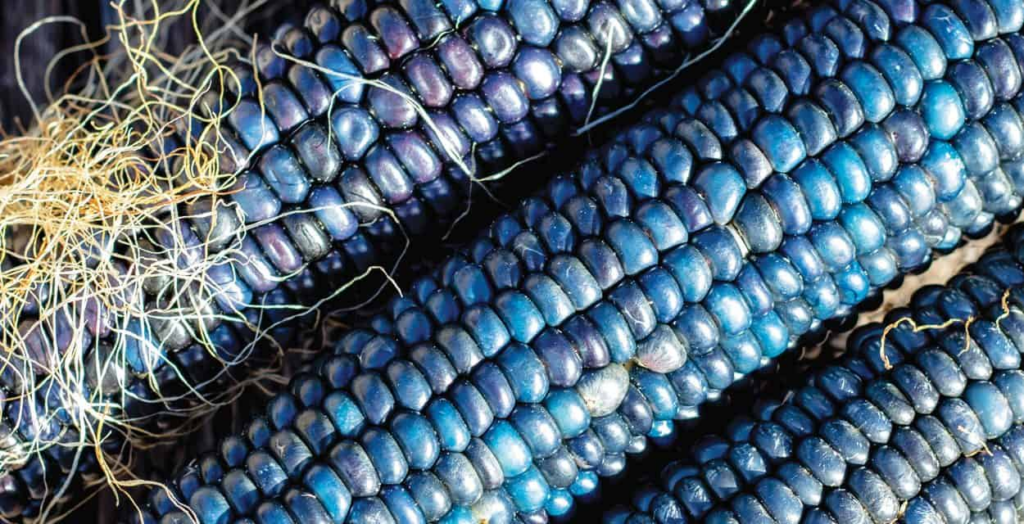
Blue Corn is a kind of corn with blue kernels and it’s a big part of food in the South and Middle of Mexico. It’s not just unique, but really good for you, too.
Research says blue corn can protect against metabolic disorders such as being overweight, diabetes, and resistance to insulin. Plus, it has antioxidants that might help your heart and keep you safe from some cancers. Blue Corn even might help with good cholesterol and lower blood pressure. Win-Win />
Not only does Blue Corn bring health benefits, but it also looks great on your plate. You can use it in tacos, tortillas, and chips for an exciting and good-for-you meal.
10. Ribier Grapes

Are you a fan of grapes? You should try Ribier grapes. These blue-purple grapes are a perfect mix of tart and sweet. They’re not just yummy — they come with some serious health perks.
Full of antioxidants, they’re great for your heart and can help prevent long-lasting diseases. Ribier grapes look pretty with their smooth, colorful skin and are perfect in fruit salads or next to cheese.
11. Honeysuckle

Honeysuckle is a pretty plant that makes tasty blue fruits. They’re little and shaped like a funnel, with a sweet and tangy taste that works well in different kinds of food.
People use honeysuckle fruit to make jams, pies, and juices. They’re really popular in Sri Lanka for traditional recipes. Honeysuckle fruits are also good for you, with lots of fiber, vitamins, and antioxidants.
If you’re up for trying a new and sweet fruit, honeysuckle is a good pick. It’s good for cooking and might also be helpful for your brain and heart.
12. Jenipapo

Jenipapo is a really special fruit that grows in the rainforests of Brazil. Its name Jenipapo means “fruit to paint with” in the Tupi language. This might mean people have used it to make paint for a really long time. Native
People from different cultures have created body paint using this fruit.
This tropical fruit is about the same size as a kiwi but looks like a dried fig. It smells like very ripe bananas, which makes it an appetizing treat. Often found in traditional recipes, it is popular for making jellies and flavorful liqueurs. The fruit holds a special place in Brazil where it grows wild in the lush tropical forests.
13. Juniper Berry
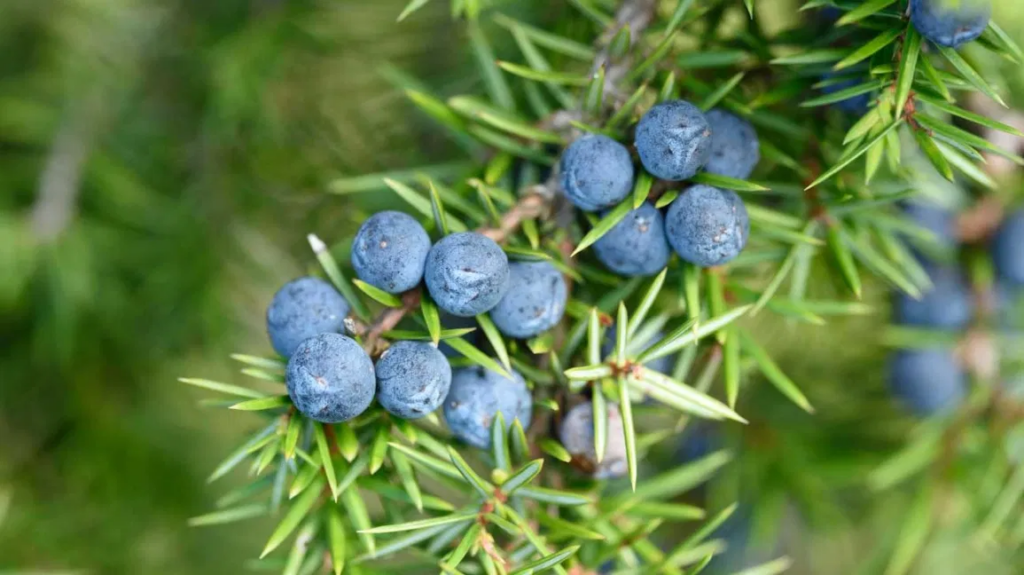
Juniper berries are small blue fruits with a frosty blue haze on their skin. They taste a bit like pine with a sweetness to them. People use them to add flavor to meat dishes, marinades, and sauces. They’re also a key ingredient in making gin.
Juniper berries are not just tasty but also good for your health. They can help with digestion and skin issues because they are full of antioxidants and have antibacterial properties. These berries can also help your body get rid of extra water.
You can find juniper berries all over the world, in places with temperate climates like North America, Europe, and Asia. They are called Juniperus communis, and for many years, people have used them to make herbal medicine.
14. Laurestine

Laurestine is a shrub from the Mediterranean with pretty green leaves and clusters of small white or pink flowers. But it’s the blue-black fruit that really stands out for its unique flavor.
The fruit is small and round with a nice mix of tart and sweet tastes. It can be eaten as is or used in cooking. In the old days, people believed Laurestine could help with digestion and even used it as a laxative.
Eating Laurestine can also be healthy for you. It’s full of antioxidants and fiber which help with your digestion and can stop diseases from happening. The fruit’s natural laxative abilities can also make your bowel movements more regular and keep your gut healthy.
Adding Laurestine to your diet is a great idea. Its small fruits are tasty and good for your health, especially for those looking for medicinal blue fruits.
15. Saskatoon Berry

The Saskatoon Berry is a Canadian blue fruit, often used in the local food. They look like blueberries, but are bigger and have a purplish-blue color. Their flavor is sweet with a hint of almond and a little bit of tartness.
Besides tasting good, the Saskatoon Berry is full of nutrients. It has lots of protein and antioxidants that help keep you healthy and protect you from some diseases.
It’s easy to mix up Saskatoon Berries and blueberries, but Saskatoon Berries can handle cold weather and they’re ready to eat in the summer. You can enjoy them in many ways, like in jams, pies, or as a topping on your ice cream.
16. Elderberries

Elderberries have been part of traditional medicine in Europe for a very long time. They grow in the wild and can taste tart, tangy, or even slightly bitter. The sweetest ones are the American variety.
Elderberries are full of healthy stuff like antioxidants and vitamins that can make your immune system stronger and help fight off harmful bacteria. They have fiber and a little bit of carbs, fat, and protein too, which gives you energy and good nutrition. The vitamin C in these berries also helps your body fight sickness.
Elderberries are not only healthy; they also make food taste better, whether it’s a main dish or a dessert.
17. Kastoree Mango

From Sri Lanka comes the Kastoree Mango, also known as the Blue Mango. This fruit is hard to find and looks different because it’s blue-purple. It tastes sweet and tangy, much like other mangoes we know. The blue skin is because of anthocyanin, a super good antioxidant that is great for your brain and can help keep you from getting sick.
The Kastoree Mango is also really versatile. You can eat it fresh, blend it into a smoothie, toss it into a salad, or make desserts like ice cream with it. It’s packed with vitamins and fiber, making it a nutritious choice for your meals.
Kastoree
If you like fruit and want to try new and interesting kinds from places across the globe, you should definitely give mangoes a go. Mangoes might be hard to find if you don’t live in Sri Lanka, but they’re worth looking for because they taste great and are super good for your health.
18. Blue Java Bananas

Blue Java bananas are also known as ‘ice cream bananas’ because they taste sweet and a bit like vanilla. These bananas come from Southeast Asia but are now also grown in places like Hawaii. They stand out because of their blue-green peel and soft, white inside.
These bananas are not just yummy in smoothies and desserts—they’re also full of good stuff like potassium, vitamin C, and vitamin B6. Plus, they have lots of fiber, which helps you feel full and keep your blood sugar steady. On top of that, they can even help you lose weight and keep your stomach healthy!
Eating Blue Java bananas is an enjoyable way to get important nutrients. You should definitely try this special fruit and benefit from what it offers.
19. Blue Sausage Fruit

The Blue Sausage Fruit is a really interesting fruit that comes from Sri Lanka. It looks a bit weird, like blue fingers all stuck together. While you can’t eat the outside, the inside part is soft, white, and tastes a little sweet—kind of like a mix of kiwi and banana.
People use this fruit in many recipes. It’s put into chutneys, jams, curries, sauces, smoothies, and ice creams because of its softer texture. This fruit is also thought to be good for your health because it has antioxidants that might help to stop diseases. It’s also said to be good for your brain and blood pressure. It’s not common everywhere, but it’s worth a try if you find it.
20. Blue Marble Tree Fruit

The Blue Marble Tree Fruit, also called Neredu in Sri Lanka, looks stunning with its shiny blue-purple skin and has delicious, sweet yellow flesh inside. It’s packed with fiber, vitamins, and anthocyanins, which are really great antioxidants.
21. Blue Jarrahdale Pumpkin

The Blue Jarrahdale Pumpkin is a unique pumpkin with a cool blue skin and sweet, orange flesh. It’s a bit bigger than other pumpkins and has a thick flesh that’s great for cooking. This pumpkin tastes really good and is full of vitamin A and iron, which are super important for your body.
22. Nonna Agnes Blue Beans

Nonna Agnes Blue Beans are very cool because they’re blue! They’re full of something called anthocyanins, which are awesome antioxidants that can make you healthier. When you cook them, they change color to a light brown or pink, which is pretty neat.
You can add these beans to lots of different foods, like pasta, soup, stew, salad, and dips. Or, you can mash them up and spread them on bread. They’re creamy and have a nutty flavor. To make them, just soak the beans overnight and then boil them until they’re soft. You can also use a pressure cooker to save time.
These beans are not only tasty and healthy with their special blue color, but you can also eat them in so many ways. They’re definitely worth cooking with!
Conclusion
Blue fruits are great because they’re not just pretty to look at but they also help keep you healthy. They can do things like help your brain work better and reduce swelling in your body. So, remember to look for them next time you’re shopping, and mix up your fruit selection with some blue options!
Whether it’s blueberries, concord grapes, or bilberries, each blue fruit has its own taste and health benefits. Don’t miss out on trying them!
